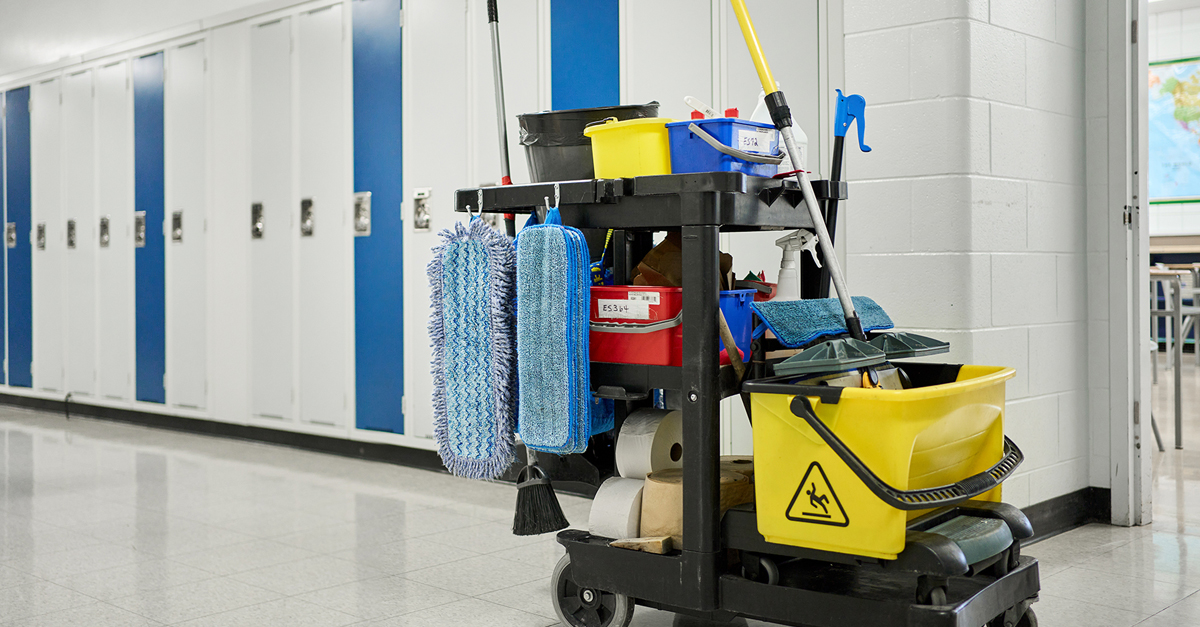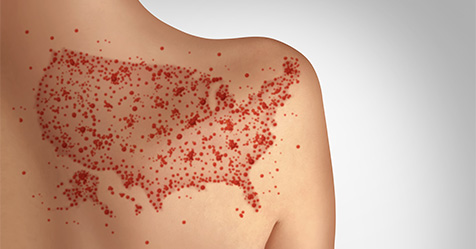As students, teachers, and staff return to their classroom routines in the fall months, maintaining clean and healthy learning environments is a top priority. At the same time, schools are struggling with funding, student absenteeism, heightened awareness of germs, and evolving health standards for cleaning and disinfecting products and practices.
The good news? Finding eco-conscious products that can keep up with the messes and germs in schools is a lot easier now.
Why eco-conscious matters
Changes to school cleaning methods are necessary to meet the needs of the students and the shifting public focus. First, children have unique activity patterns and differences in body function that make them more vulnerable than adults. They eat, breathe, and drink more relative to their body size, and their natural defenses are less developed. These characteristics are one reason to consider choosing eco-conscious cleaning products when you manage custodial work in a school.
Second, the requirements for schools are shifting significantly towards eco-conscious and environmentally preferable practices. The number of states that require or recommend schools to enact a green cleaning policy has more than doubled in the last three years. Between evolving requirements and growing concern about children’s health at school, it’s never been more important to switch to eco-conscious products.
Benefits of certified products
Product certifications can make it easy to ensure that you are getting an effective product with the right eco-conscious benefits. Two of my favorite certifications are the Environmental Protection Agency (EPA) Safer Choice and EPA Design for the Environment (DfE). Here’s what these certifications get you:
Proven efficacy: A common misconception is that eco-conscious cleaners and disinfectants are less effective and efficient than traditional cleaners. This is simply not true, and I would encourage facility managers to look beyond the eco-conscious benefits and focus on the product claims and testing. The Safer Choice and DfE certifications require that products work as well as their traditional counterparts, and manufacturers must provide the necessary data to back that up. For example, Safer Choice cleaners must score similarly to traditional cleaners, and DfE -certified disinfectants go through the same EPA registration and approval process as traditional disinfectants. Thus, DfE -certified products disinfect just as well as traditional disinfectants, require a similar contact time, and are effective against the same pathogens.
Safer ingredients: Eco-conscious products can also provide immediate benefits to the people that use them, from cleaning professionals to building occupants. These products are often free of dyes or fragrances, so they don’t have irritating odors. Their gentle formulations ensure users don’t need to wear personal protective equipment (PPE).
Product ingredients must be approved by Safer Choice and thoroughly reviewed to ensure their reduced impact on human health and the environment.
Ease in identity: Unlike many other third-party certifications for products, EPA Safer Choice and EPA DfE can put their logos on a product label. These logos make it easy to identify safer products when you’re shopping at a supply store or browsing through catalogs. Additionally, you can use the search features on the Safer Choice and DfE websites to find exactly what you need.
Best practices for implementation
The reality is that you may not be able to replace every product you need with an eco-conscious alternative. I recommend focusing on key products that can be easily incorporated with minimal training. Focus on the following three areas when making changes to your cleaning practices in schools.
- Audit current cleaning products and practices and identify products that can be transitioned to Safer Choice- or DfE-certified products. Daily disinfectants and cleaners, glass cleaners, and disinfecting wipes all have excellent eco-conscious options and will cover most of your cleaning tasks. For specialty items, like heavy-duty degreasers, you may still need to use traditional products.
- Train staff on proper use and safety protocols. Train staff on how to use both eco-conscious and traditional cleaning products correctly. It is tempting to assume that eco-conscious products are safe for anyone to use. However, children should not use these products, and your cleaning staff should not be using any cleaning products—eco-conscious or traditional—while children are around.
- Look beyond the products: HVAC systems, vacuums, trash and recycling disposal methods, and water quality also have an impact on the hygiene of the school environment. Investigate short- and long-term changes you can make to upgrade these practices for a healthier indoor environment.
A smarter approach to school hygiene
The first few months of the school year are a good time to get a fresh start on cleaning and maintenance strategies. Facility managers have one of the most important roles when it comes to keeping schools healthy. Their goal is not just to clean, but to clean in a way that protects the younger generations.



